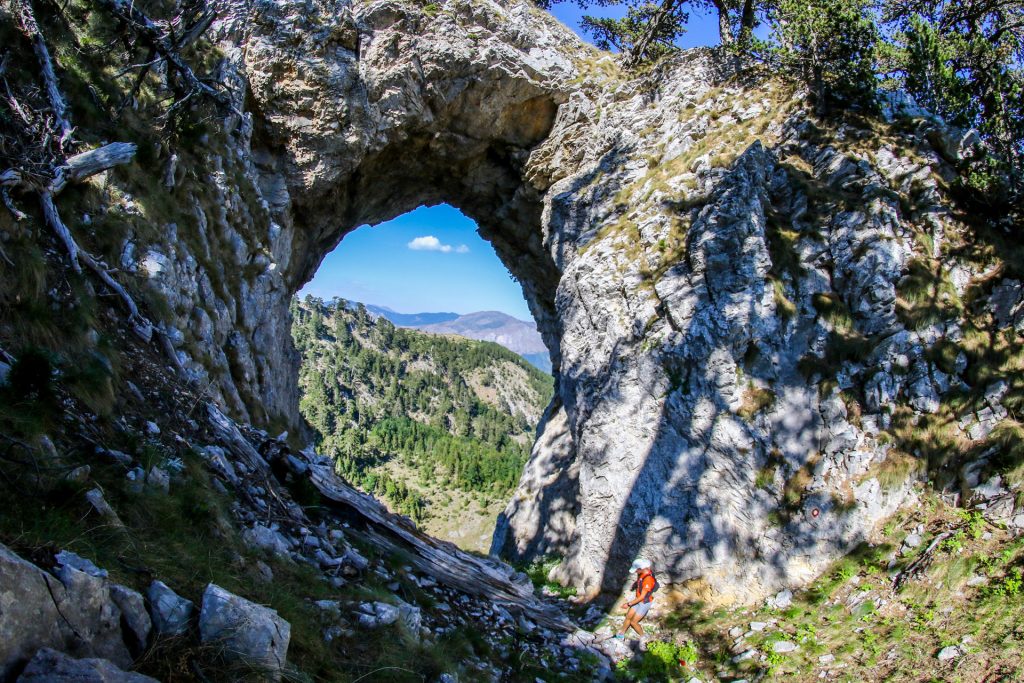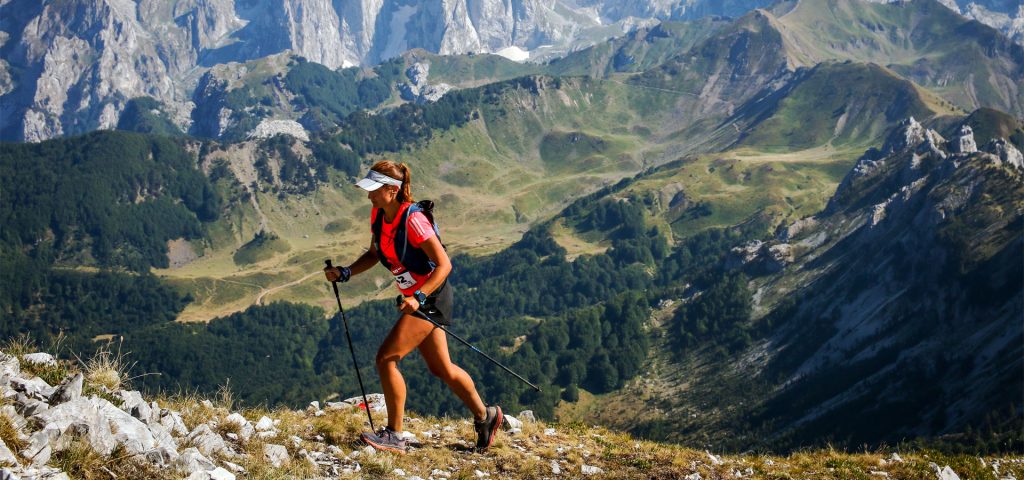PROKLETIJE - MOUNTAINS OF UNIQUE NATURAL BEAUTY AND RARITY
Prokletije is not a single mountain, but a complex of about 40 mountain ranges that cross each other forming a special mountain system with the dominant direction extending from the southwest to the northeast.
Vegetation decor is among the most important bearers of the aesthetic values of the landscape of Prokletije. It consists of extensive forest-grass complexes, and cultural vegetation in the lower areas (orchards, fields, meadows and other agricultural crops). Forests are, like rarely someplace else. distinguished by the diversity of tree types (oaks, beeches, pines, etc.) and the richness of vegetation forms (high and low forests, thickets, bushes). In addition to the economic, protective and recreational functions, the forests of Prokletije also have a significant aesthetic-decorative and hygienic-health function.
Flowers and herbs are a special wealth of Prokletije. Almost every mountain has its characteristic flower. For Chakor it is primrose, and for some of its localities lombardy poplar tree. For Shtedim, Hajla and Rusolija - edelweiss, for Smiljevica – “smilje”- the immortelle after which it was named, for Bjelich the newly found whitlow-grass (Draba bertiscea) - a world rarity. On Gubavac hill near Pec grows a tertiary relict and endemic - Forsythia europaea, which blooms in April.


The natural values of Prokletije are told by the impressions of renowned researchers, travel writers, mountaineers and nature lovers.
Jovan Cvijić, one of the pioneers in the research of glaciation, hydrography and demography of Prokletije, said in 1913: "Prokletije is the most prodigious mountain range in the western half of the Balkan Peninsula, natural forces and natural processes are more miraculous than even the most vivid imagination can represent".
"Prokletije are really able to make everyone, even ordinary people, love them and get to know them better, and when they do get to know them, they will be convinced that they are one of the most beautiful mountains in our country, whose peaks rise to the sky and compete with each other with their height and beauty" - wrote one of the first explorers and lovers of these mountains - Miloš Velimirović.
Traveling via Prokletije in the direction Podgorica-Cijevna-Gusinje, in 1909. Russian engineer A. Basmakov in his book "Across Montenegro to the Land of Gega" gives a vivid description of the cruelty and wilderness of this part of Prokletije: "Nowhere did we meet the smile of nature, and in some places we could barely glance at the narrow strip of sky above Cijevna, taking care of ourselves and horses so that we don't fall into the threatening abyss under our feet".
One of the many mountaineers, explorers and travel writers - Srećko Vatovac, impressed by the magnificent and unforgettable views from the peaks of Prokletje, wrote in 1938 in "Hrvatski Planinar" among other things: "How much pain, effort and perseverance the journey to the snowy peaks requires. The greater the pain for a man to climb them, the greater the pleasure he feels when he reaches the desired goal. Ah, what wonderful views fall from the peaks. How much a man enjoys when he is free and looks from the top at the other hills and valleys, rivers and villages below him. All the efforts of ascent, no matter how great, disappear before the greatness of pleasure and enjoyment".
The greatest lover of Prokletije and one of their researchers, academician Branislav Gušić, a doctor and scientist from Zagreb, cruised for 50 years in their crags and wrote numerous works about them, climbed Maja Jezerces and many other peaks. He fell in love with both the nature and the people of Prokletije, experienced the unsurpassed beauty and charm of these mountains, and at the end, when he had to part with them, he wrote: "All these sights flash before my eyes, so I wonder if fate will grant me the opportunity to absorb this landscape with all my heart just a few more times, the landscape which I fell in love with when I was young and to which I remained faithful until my old age".
Here are a few more impressions of Prokletije. Mountaineer, Eng. M. Božinović: "Suddenly discoverd and only a little known Caranfil really represents the most beautiful thing that can be seen from among the mountain ranges from Tolmin to Đevđelia".
The well-known forestry expert from Sarajevo, P. Fukarek, at the consultation on national parks of Yugoslavia (Brezovica 1979) said that Prokletije and Šar-planina are unique natural areas not only on the Balkan Peninsula or in Europe, but perhaps also in the whole world, so they are in urgent need of protection.
Many other researchers and travel writers have written superlatives about Prokletije, their natural values and their beauty, among them: Radomir Lakušić, Milorad Janković, Dragoš Stevanović, Milan Kovačević, academician Milisav Lutovac, Mirko Marković and others.
Professor Marko Knežević
